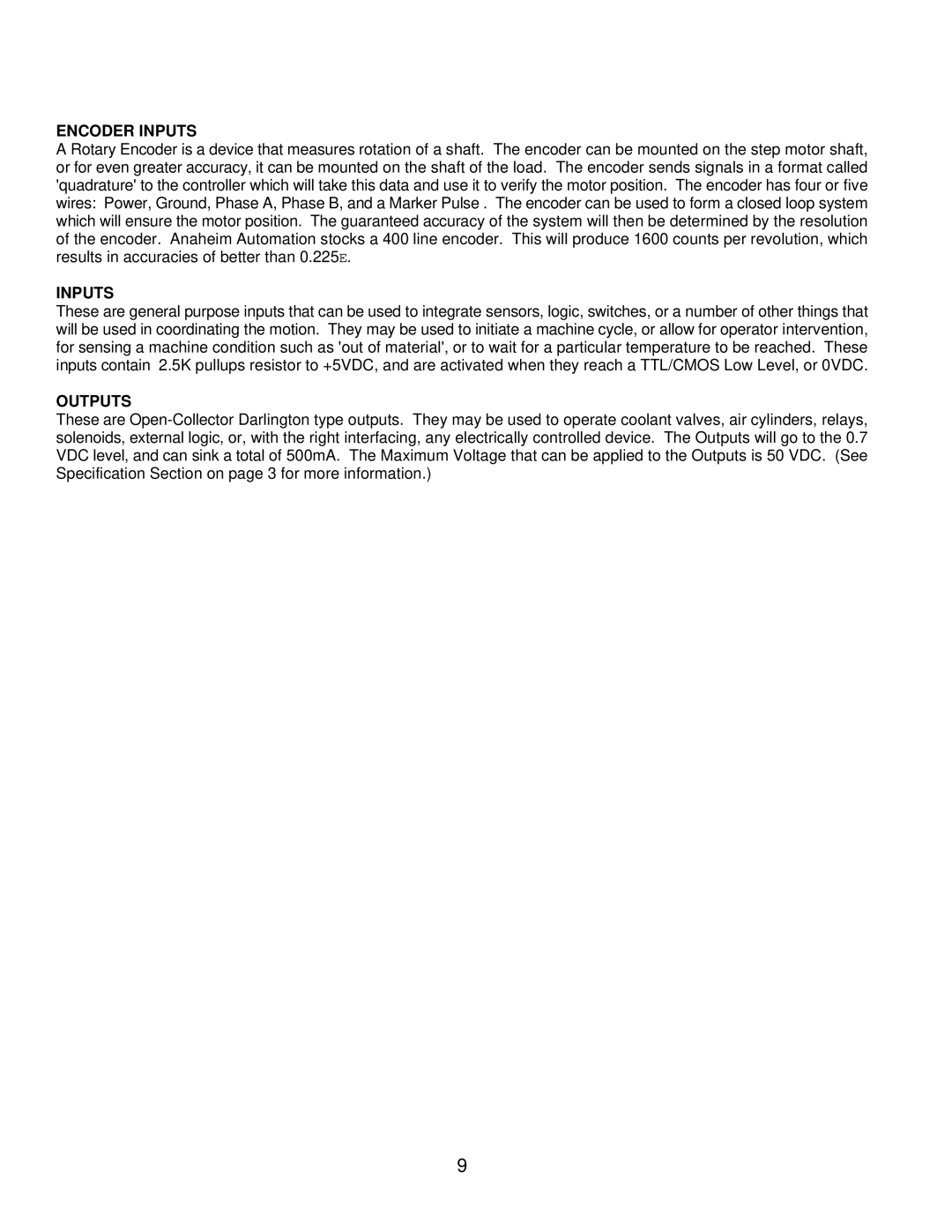ENCODER INPUTS
A Rotary Encoder is a device that measures rotation of a shaft. The encoder can be mounted on the step motor shaft, or for even greater accuracy, it can be mounted on the shaft of the load. The encoder sends signals in a format called 'quadrature' to the controller which will take this data and use it to verify the motor position. The encoder has four or five wires: Power, Ground, Phase A, Phase B, and a Marker Pulse . The encoder can be used to form a closed loop system which will ensure the motor position. The guaranteed accuracy of the system will then be determined by the resolution of the encoder. Anaheim Automation stocks a 400 line encoder. This will produce 1600 counts per revolution, which results in accuracies of better than 0.225E.
INPUTS
These are general purpose inputs that can be used to integrate sensors, logic, switches, or a number of other things that will be used in coordinating the motion. They may be used to initiate a machine cycle, or allow for operator intervention, for sensing a machine condition such as 'out of material', or to wait for a particular temperature to be reached. These inputs contain 2.5K pullups resistor to +5VDC, and are activated when they reach a TTL/CMOS Low Level, or 0VDC.
OUTPUTS
These are
9
